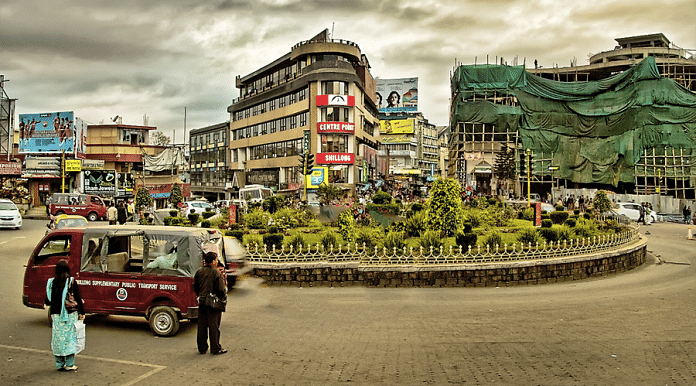Dalits from Punjab were first moved to the hill-station around 160 years ago when the British brought them as ‘manual scavengers’ but clashes over land rights still continue.
New Delhi: The situation in Shillong continues to remain tense after clashes between members of the local Khasi and Sikh communities, the first of which began on 31 May.
What began as an altercation between a Punjabi woman and a Khasi bus driver soon escalated into a physical scuffle near the Punjabi Line area of the city. The matter was momentarily settled when the police stepped in.
The clashes began again after rumours, supposedly spread through WhatsApp, claimed that two Khasi boys had been decapitated. A mob gathered in the area and fights broke out, leading to a curfew being imposed by Friday evening. The police had to use tear gas to disperse the crowd and the army was put on standby. Internet and telephone services were also suspended for 48 hours.
The Dalit Sikhs of Shillong
The Dalits from Punjab first moved to the hill-station around 160 years ago when the British brought them to work as manual scavengers. Since then, generations have settled in the Bara Bazaar area (or Punjabi Line as it is popularly known) and later at a colony of army recruits called Gora Line near the Laitumukhra area.
After independence, the members of the community were employed as cleaners in the Shillong municipal board, state government offices, cantonment board and hospitals.
Whose land?
Punjabis in the area claim that the land was donated to them by the Syiem of Mylliem (a village) back in the 1800s. The Syeim, or chieftain, acts as the local judicial and administrative authority under the jurisdiction of the Khasi Hills Autonomous District Council.
A report, however, claims that a document issued in 2008 by the erstwhile Khasi royalty denies giving the Sikh Dalits the land.
“The Syiem and Darbar Hima Mylliem never issued any land document to the Harijan community, but recognised and respected them since the plot of land was allotted to Dalits long time back by the predecessors Syiem of Hima Mylliem,” the document reads.
Pending demands for evacuation
Many of the Sikh Dalits claim there have been several attempts to evict them since the 1980s, when the practice of ‘manual scavenging’ was abolished in the state.
Locals allege that the Punjabi settlement is illegal and a hub of criminal activity in the city.
In the 1970s, an eviction order was issued to the residents by the district commissioner, which was stayed by the Meghalaya High Court in 1986. Over the years, local groups such as the Khasi Student’s Union and the Federation of Khasi Garo Jaintia People have demanded the Sikhs be removed from the area.
Many rehabilitation attempts, no results
The issue of eviction arose again after the recent clashes. Independent MLA Lambor Malngiang said the Sikh residents must be moved to the nearby area of Nongmynsong, where alternate arrangements have been made by the government.
In September last year, the state government in an effort to rehabilitate the community and give a facelift to the area under the Urban Poverty Elevation Programme, wanted to shift the residents to government quarters. The Dalit Sikhs were sceptical of this move and refused to cooperate.
With the clashes, new demands have erupted over the land issue. Tensions continue in the city and the curfew has been extended till Tuesday.






